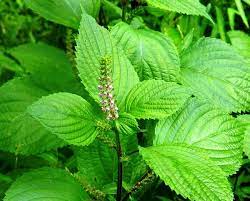Perilla frutescens, also known as perilla, is a versatile plant that has been used for centuries in traditional medicine, as a culinary herb, and in livestock feed. In recent years, there has been growing interest in its potential health benefits due to its high content of antioxidants, omega-3 fatty acids, and flavonoids. In this article, we will explore the latest research on perilla, its development, and its consequences for agriculture.
According to a recent study published in the journal Molecules, perilla is a rich source of essential oils, phenolics, and flavonoids, which contribute to its antioxidant properties. These compounds have been shown to have a range of health benefits, including reducing inflammation, improving cardiovascular health, and preventing cancer.
In addition to its medicinal properties, perilla is also a popular culinary herb in Asia, where it is used to flavor dishes and as a garnish. It is rich in essential oils, which give it a unique flavor and aroma, and it is also a good source of vitamins and minerals.
From an agricultural perspective, perilla is a hardy crop that is resistant to pests and disease. It is easy to grow and can be cultivated in a variety of soil types, making it an attractive option for farmers. Furthermore, its leaves and seeds can be used as animal feed, making it a valuable crop for livestock farmers.
In conclusion, perilla frutescens is a versatile crop with a range of potential health benefits. Its antioxidant properties, omega-3 fatty acids, and flavonoids make it a valuable addition to both traditional medicine and modern cuisine. From an agricultural perspective, it is a hardy crop that is easy to grow and can be used for both human and animal consumption. As interest in perilla continues to grow, it has the potential to become an important crop for farmers and a valuable source of nutrition for consumers.
#PerillaFrutescens #CulinaryHerbs #HealthBenefits #Agriculture #Antioxidants #Omega3FattyAcids #Flavonoids












